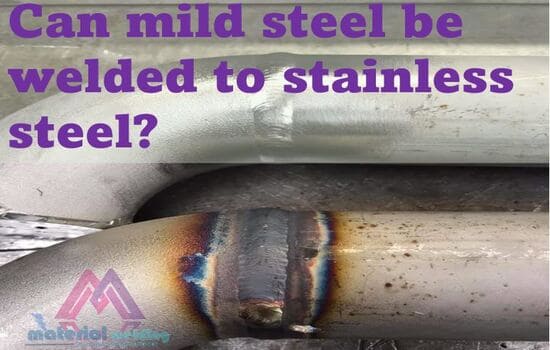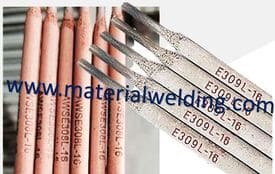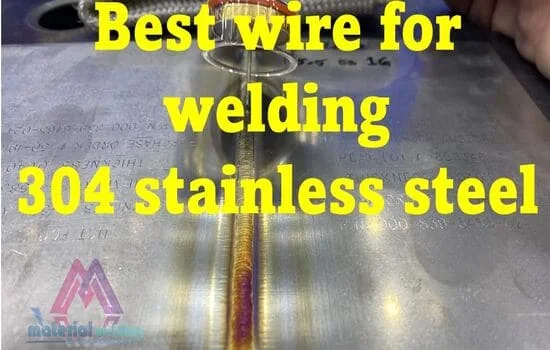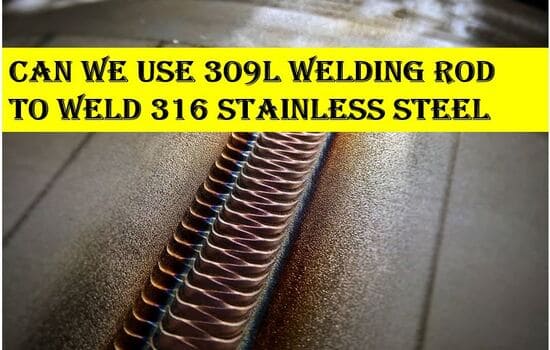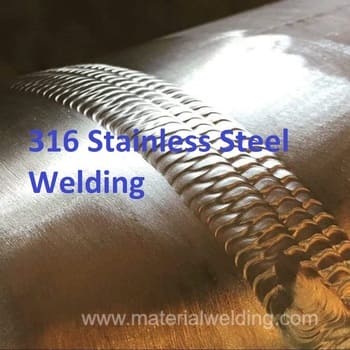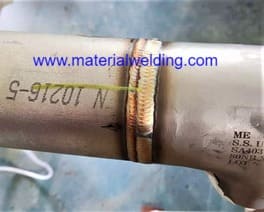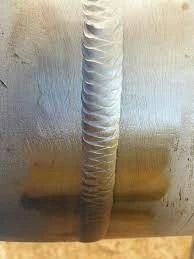Can you weld 304 stainless with 309 wire?
One of the most common questions among welders or welding engineers is whether we can weld 304 stainless steel with 309 wire rod. For me, to answer this question, it’s essential that you understand both materials and their properties.
Firstly, 304 stainless steel is an austenitic stainless steel alloy that contains chromium and nickel, making it highly resistant to corrosion and able to withstand high temperatures compare to carbon steel.
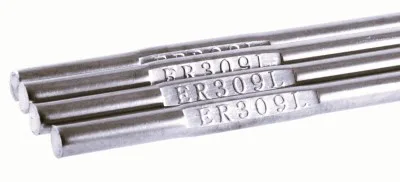
On the other hand, 309 wire is a filler metal used for welding dissimilar metals such as stainless steel to mild or low-alloy steel. It has a higher content of chromium and nickel than 304 stainless steel, which compensate nickel and chromium in the dissimilar weld made between SS and CS materials.
In term of weldability, you can use 309 wire rods to weld 304 stainless steel.
While it may seem logical to you that using 309 wires would be advantageous when welding 304 stainless steel due to its higher nickel and chromium content, there are some factors that need your consideration before you make a final decision, such as:
- 309 wire rod is costlier than 308 filler wire. So you will spend more money for same welding.
- 309 wire is best for welding stainless steel (SS304, SS316) to carbon steel or low alloy steel.
- The hardness of weld will be more with 309 wire compared to 308 weld (308 wire is the recommended welding wire for 304 welding).
Remember, that before the invention of 308 wire, 309 type wires are commonly used for welding 304 stainless steel alloys.
Welding 304 stainless steel, a widely used austenitic stainless steel, with 309 wire is a common practice when joining stainless steel to carbon steel or other dissimilar metals. In this article, we will explore the characteristics of 304 stainless steel and 309 wire, and discuss why this combination is suitable for various welding applications.
Characteristics of 304 Stainless Steel
304 stainless steel is an 18/8 stainless steel, containing 18% chromium and 8% nickel. It is known for its excellent corrosion resistance, formability, and weldability, making it a popular choice for a wide range of applications, such as food processing equipment, architectural components, and chemical containers.
Properties of 309 Wire
309 wire, or ER309L, is an austenitic stainless steel filler metal with a nominal composition of 24% chromium and 13% nickel. It is specifically designed for welding dissimilar metals, providing a strong bond and superior corrosion resistance. The high chromium and nickel content in 309 wire make it suitable for high-temperature applications and ensure a stable austenitic structure in the weld.
Advantages of Welding 304 Stainless with 309 Wire
- Compatibility: The 309 wire is specially designed for joining dissimilar metals, making it a suitable choice for welding 304 stainless steel to carbon steel or other materials.
- Corrosion resistance: The higher chromium and nickel content in 309 wire provides better corrosion resistance than most carbon steel filler metals.
- Reduced cracking: The low carbon content in ER309L and its austenitic structure help to minimize solidification cracking and hydrogen-induced cracking during welding.
Welding Best Practices and Precautions
To achieve successful welds using 309 wire on 304 stainless steel, follow these best practices and precautions:
- Joint design and preparation: Ensure proper joint geometry, fit-up, and cleanliness to minimize weld defects and achieve adequate penetration.
- Welding technique and parameters: Choose the appropriate welding process (such as TIG or MIG welding), and use the correct welding current, voltage, and travel speed to minimize dilution and distortion.
- Shielding gas: Select the appropriate shielding gas mixture (such as argon with 2-5% CO2 or argon with 2-5% O2) to ensure proper arc stability and weld quality.
- Interpass temperature: Control interpass temperature to reduce the risk of carbide precipitation and sensitization, which can lead to intergranular corrosion.
- Post-weld cleaning: Perform post-weld cleaning to remove any contaminants or heat-tint that may have formed during welding, ensuring optimal corrosion resistance.
In conclusion, welding 304 stainless steel with 309 wire is not only possible but also advantageous in certain applications. By understanding the characteristics of these materials and following best practices and precautions, you can achieve high-quality, durable, and corrosion-resistant welds.
